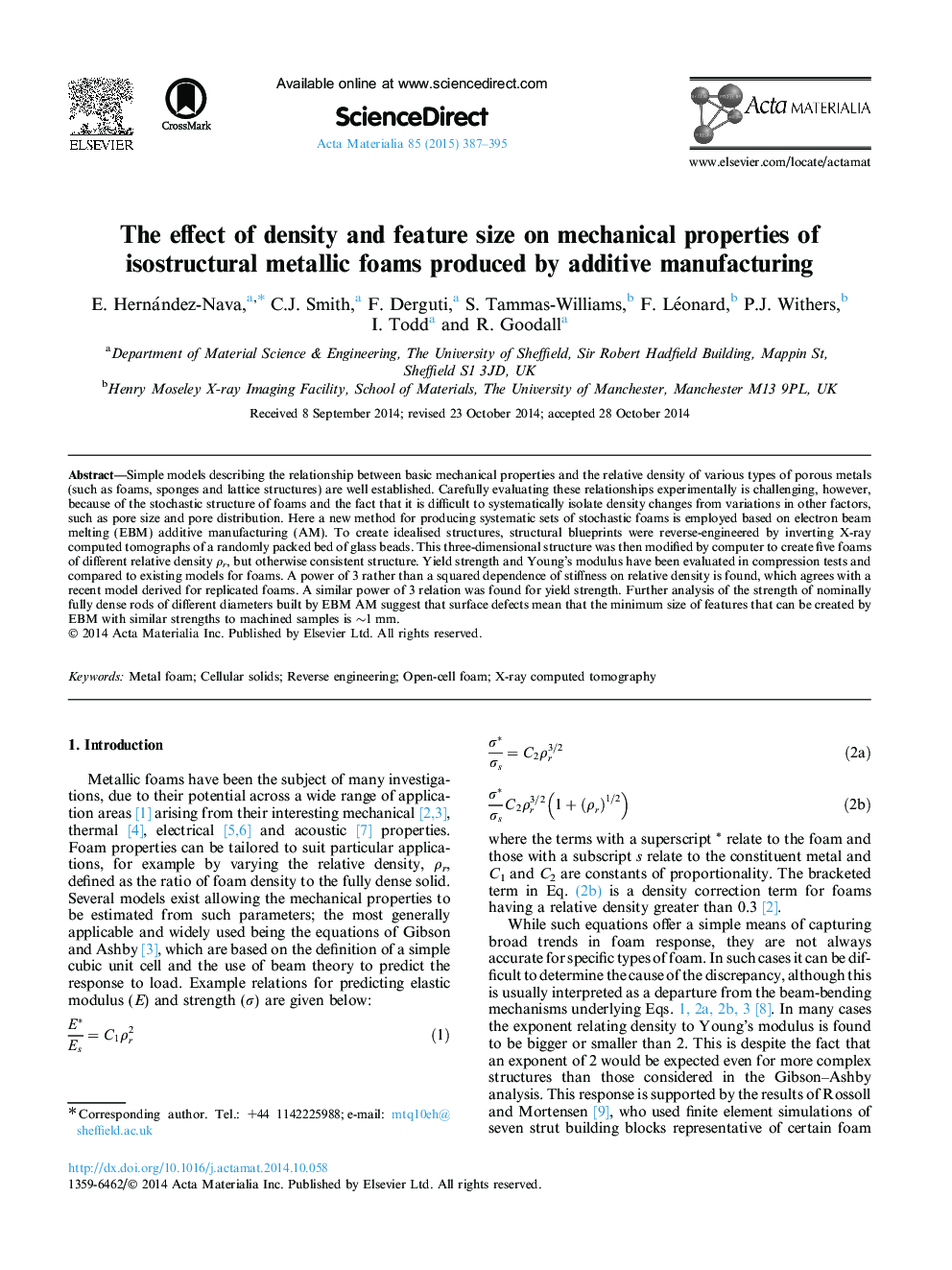| Article ID | Journal | Published Year | Pages | File Type |
|---|---|---|---|---|
| 7880882 | Acta Materialia | 2015 | 9 Pages |
Abstract
Simple models describing the relationship between basic mechanical properties and the relative density of various types of porous metals (such as foams, sponges and lattice structures) are well established. Carefully evaluating these relationships experimentally is challenging, however, because of the stochastic structure of foams and the fact that it is difficult to systematically isolate density changes from variations in other factors, such as pore size and pore distribution. Here a new method for producing systematic sets of stochastic foams is employed based on electron beam melting (EBM) additive manufacturing (AM). To create idealised structures, structural blueprints were reverse-engineered by inverting X-ray computed tomographs of a randomly packed bed of glass beads. This three-dimensional structure was then modified by computer to create five foams of different relative density Ïr, but otherwise consistent structure. Yield strength and Young's modulus have been evaluated in compression tests and compared to existing models for foams. A power of 3 rather than a squared dependence of stiffness on relative density is found, which agrees with a recent model derived for replicated foams. A similar power of 3 relation was found for yield strength. Further analysis of the strength of nominally fully dense rods of different diameters built by EBM AM suggest that surface defects mean that the minimum size of features that can be created by EBM with similar strengths to machined samples is â¼1Â mm.
Related Topics
Physical Sciences and Engineering
Materials Science
Ceramics and Composites
Authors
E. Hernández-Nava, C.J. Smith, F. Derguti, S. Tammas-Williams, F. Léonard, P.J. Withers, I. Todd, R. Goodall,
